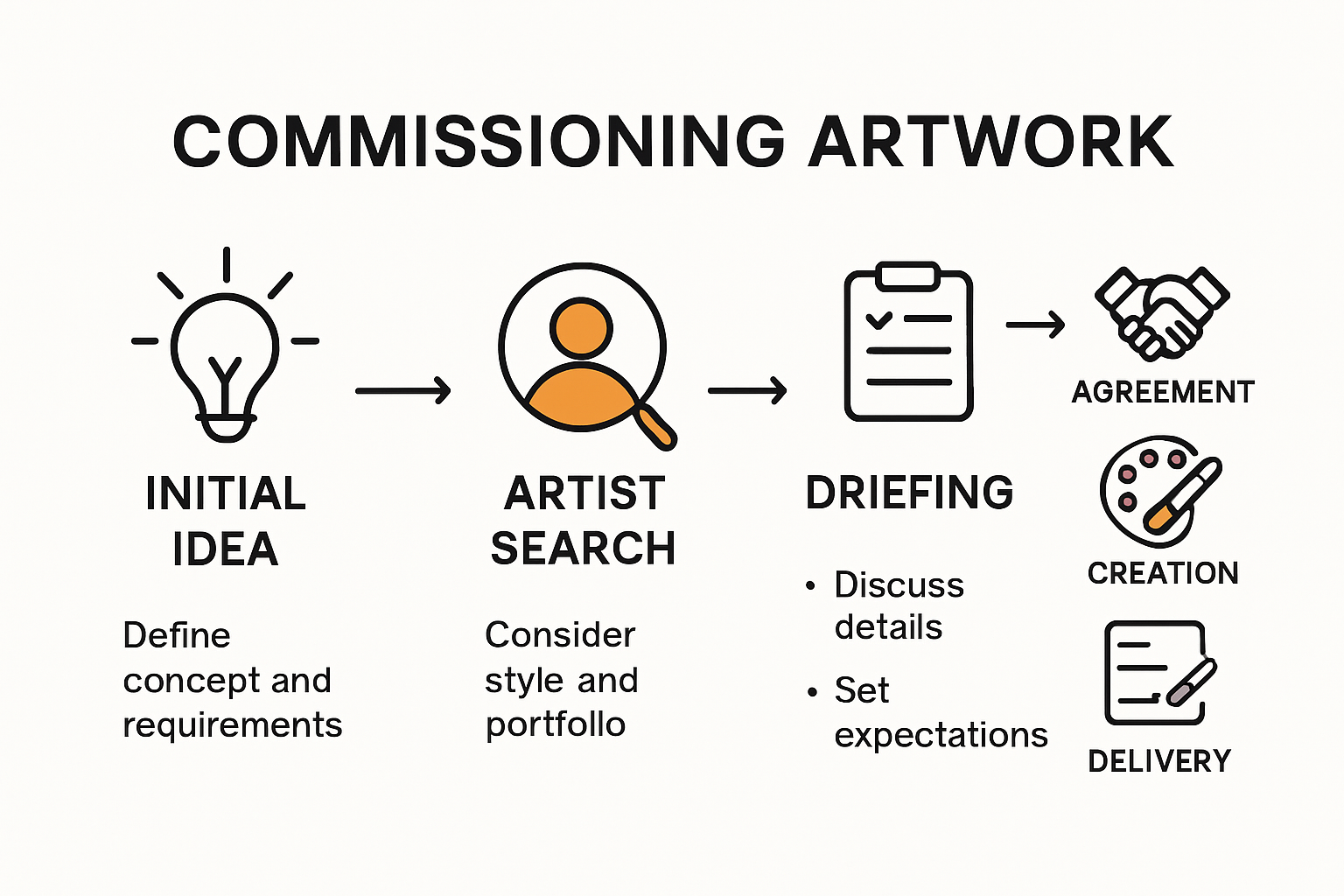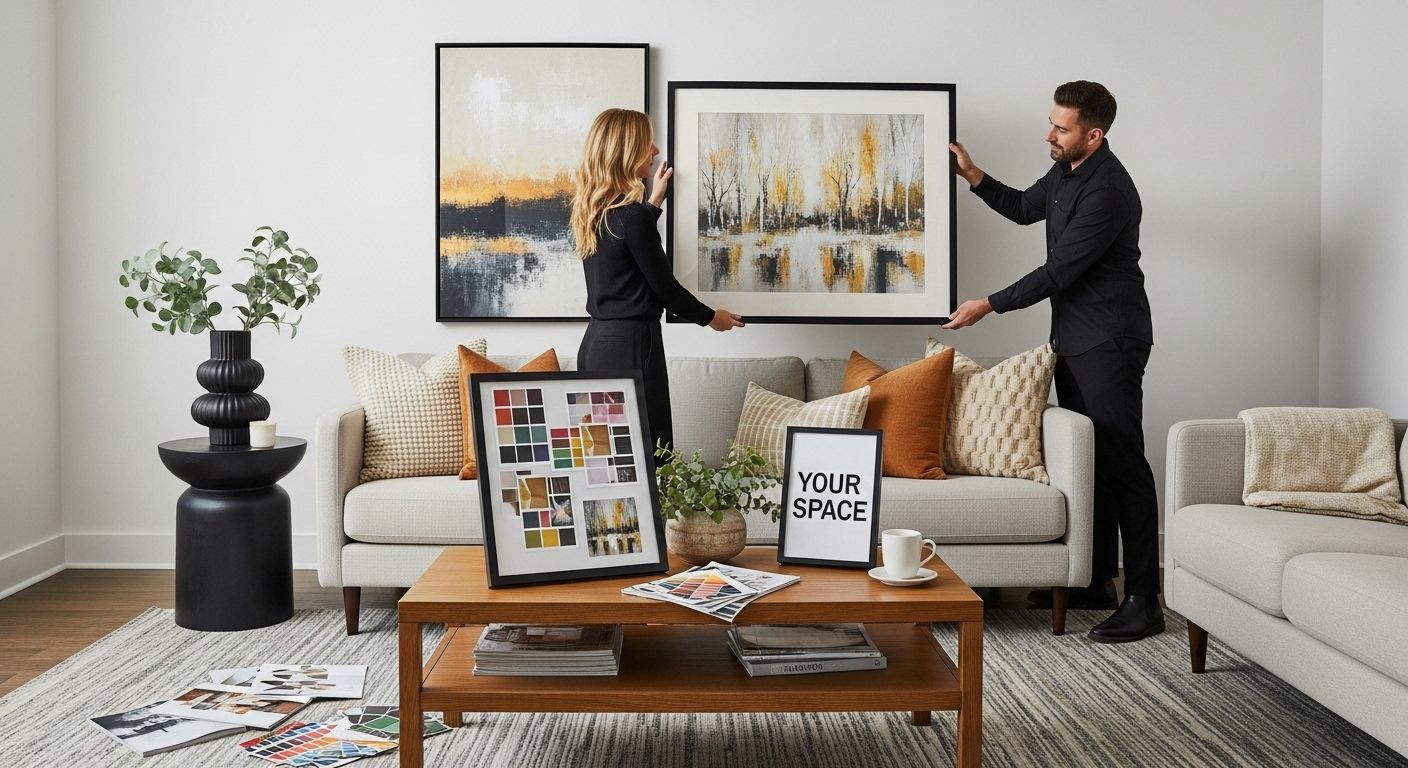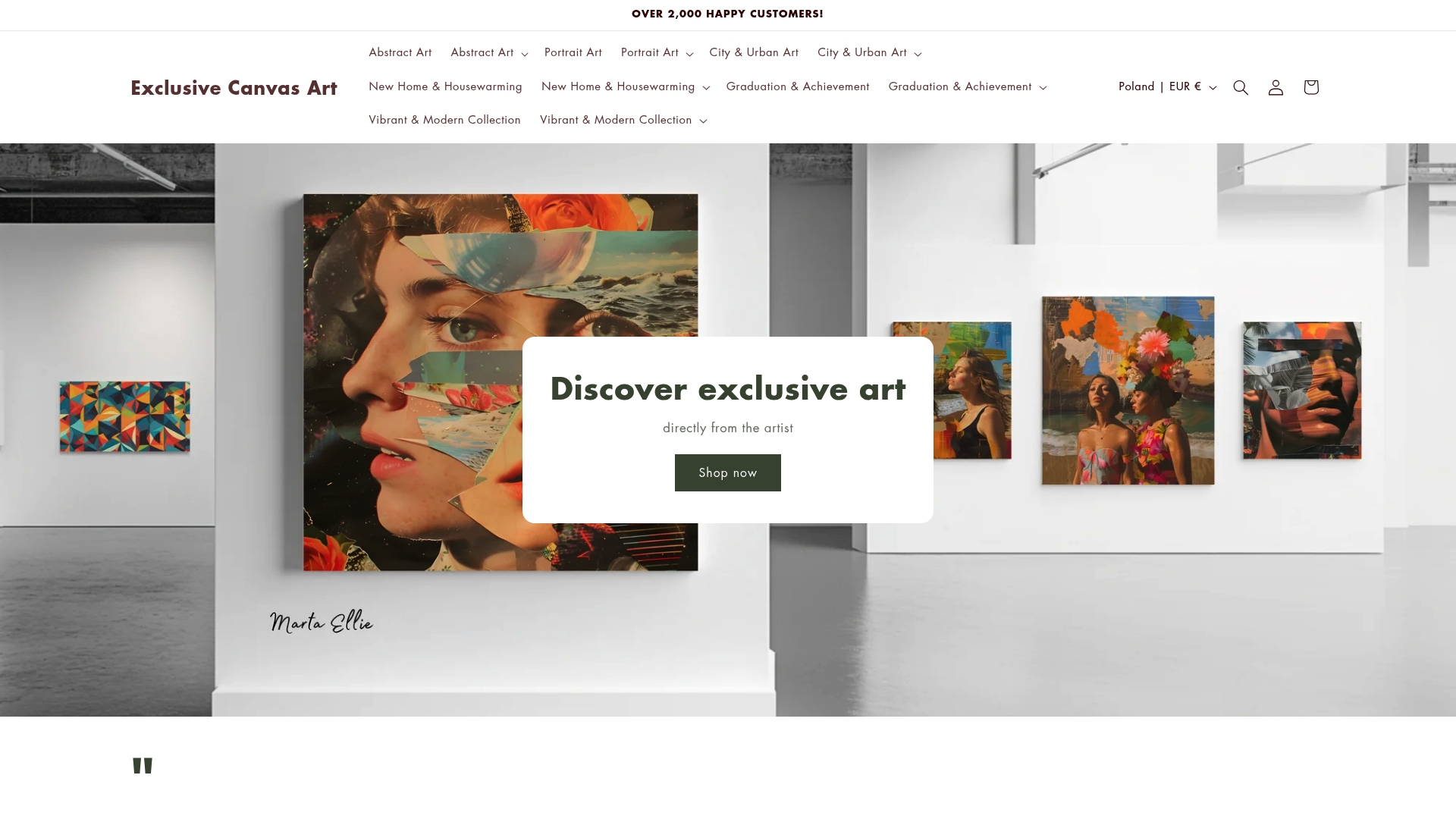
How to Commission Artwork: A Simple Guide for Collectors and Decorators

Commissioning artwork is one of the rare chances to get a piece made just for you, not just pulled from a gallery wall. Most people do not realize that you can dictate everything from the color palette to the exact mood and message, making every inch truly personal. The wild part is, you do not need to be a wealthy collector or a design expert to make it happen and anyone can start this creative partnership with just a few smart steps.
Table of Contents
- Understanding What Commissioned Artwork Means
- How to Find and Choose the Right Artist
- Planning the Perfect Commission for Your Space or Gift
- Tips for Communicating and Finalizing Your Art Commission
Quick Summary
| Takeaway | Explanation |
|---|---|
| Clearly define your artistic vision. | Provide specific details like size, color palette, and emotional intention to guide the artist effectively. |
| Conduct thorough artist research. | Use platforms like Behance and Instagram to explore artist portfolios and ensure compatibility with your artistic goals. |
| Establish a comprehensive commission agreement. | Include project scope, financial terms, timelines, and revision policies to protect both parties and clarify expectations. |
| Communicate openly and regularly with the artist. | Maintain clear communication through various methods to stay aligned on project progress and feedback. |
| Budget for all potential costs. | Consider additional expenses beyond the artwork’s price, such as framing or shipping, to avoid surprises later. |
Understanding What Commissioned Artwork Means
Commissioned artwork represents a unique collaborative process where an artist creates a custom piece specifically tailored to a client’s vision, preferences, and requirements. Unlike purchasing existing artwork, commissioning involves direct communication between the artist and the collector to bring a personalized artistic concept to life.
The Essence of Custom Art Creation
At its core, commissioned artwork is about transforming a client’s imagination into a tangible visual experience. Art collectors and decorators seek commissioned pieces for various reasons, ranging from filling specific design spaces to capturing meaningful personal narratives. The process goes beyond simply buying a pre existing artwork it involves active collaboration where the client becomes part of the creative journey.
Research from the National Arts Council indicates that commissioned artwork allows for unprecedented levels of personalization. Clients can specify details like size, color palette, subject matter, and artistic style, ensuring the final piece perfectly matches their aesthetic and emotional requirements. This level of customization sets commissioned art apart from standard art purchases, providing a deeply personal and unique artistic experience.

Understanding the Commissioning Process
The commissioning process typically involves several structured stages that facilitate clear communication and artistic collaboration. Initially, the client and artist discuss the project’s scope, including conceptual ideas, technical specifications, and budget considerations. This preliminary consultation helps establish mutual understanding and expectations.
Artists who specialize in commissioned work often require a detailed brief that outlines the client’s vision. This might include reference images, color preferences, emotional themes, or specific design constraints. Professional artists will then provide a comprehensive proposal, including estimated timelines, pricing, and potential design concepts.
According to Art Business Today, successful commissioned artwork hinges on transparent communication. Clients should be prepared to provide clear guidance while also trusting the artist’s creative expertise. The most compelling commissioned pieces emerge from a balance between the client’s vision and the artist’s interpretative skills.
Commissioned artwork represents more than a transaction it is a collaborative artistic dialogue. Whether you are an interior designer seeking a statement piece, a collector wanting a unique representation of a personal memory, or an individual looking to support independent artists, understanding the nuanced world of commissioned art opens up exciting creative possibilities.
By engaging directly with artists and participating in the creative process, clients transform from passive art consumers to active creative partners, resulting in truly one of a kind artworks that reflect individual stories, emotions, and aesthetic sensibilities.
How to Find and Choose the Right Artist
Finding the perfect artist for a commissioned artwork requires strategic research, careful evaluation, and a thoughtful approach to matching your artistic vision with the right creative professional. The process involves more than simply selecting someone who can draw or paint understanding the artist’s style, expertise, and compatibility with your project is crucial.
Exploring Artist Discovery Platforms
Modern technology has revolutionized how art collectors and decorators discover talented artists. Online art platforms now provide extensive networks of professional artists across various styles and mediums. Websites like Behance and DeviantArt offer comprehensive portfolios where artists showcase their work, allowing potential clients to explore diverse artistic styles and technical capabilities.
Research from the Professional Artists Association suggests that successful artist discovery involves multiple strategies. Social media platforms like Instagram have become powerful tools for artists to share their work, with dedicated art hashtags and curated galleries making it easier than ever to find professionals who match specific aesthetic preferences.
Evaluating Artistic Compatibility
Choosing the right artist goes far beyond technical skill. It requires a deep understanding of artistic compatibility and communication potential. When reviewing potential artists, collectors should examine several critical factors:
- Portfolio Depth: Look for comprehensive portfolios demonstrating consistent quality and stylistic range.
- Specialization: Identify artists who have experience in the specific style or medium you desire.
- Previous Commission Experience: Seek artists with a track record of successful commissioned projects.
According to Art Business Quarterly, successful commissions depend on clear communication and shared artistic vision. Potential clients should schedule initial consultations to discuss project details, assess the artist’s responsiveness, and determine whether their creative approach aligns with the desired outcome.
Practical Considerations in Artist Selection
Beyond artistic skill, practical considerations play a significant role in selecting the right artist. Budget, timeline, and professional reputation are crucial factors. Professional artists typically provide detailed proposals outlining project scope, estimated completion time, pricing structure, and revision policies.
Collectors should request comprehensive documentation including:
- Detailed pricing breakdown
- Estimated project timeline
- Number of proposed revisions
- Payment schedule and terms
- Previous client testimonials or references
Recommendations from local art galleries, professional networks, and art community forums can provide valuable insights into an artist’s reputation and reliability. Many professional artists maintain websites or professional profiles that offer transparent information about their background, artistic philosophy, and previous commissioned work.
Ultimately, finding the right artist is a nuanced process that combines research, intuition, and clear communication. By approaching the selection systematically and maintaining open dialogue, collectors can transform their artistic vision into a remarkable commissioned piece that exceeds expectations.
Planning the Perfect Commission for Your Space or Gift
Planning a commissioned artwork requires strategic thinking and careful consideration to ensure the final piece perfectly meets your aesthetic, emotional, and functional requirements. Whether you are designing for a personal space or creating a meaningful gift, the planning stage is crucial in transforming your artistic vision into a tangible masterpiece.
Understanding Your Space and Design Context
Before initiating a commission, thoroughly assess the environment where the artwork will be displayed. Art gift selection involves more than just choosing a visually appealing piece it requires understanding spatial dynamics, existing color schemes, and the emotional atmosphere of the room.
Research from the Interior Design Institute reveals that successful art placement depends on multiple factors. Consider elements like wall dimensions, lighting conditions, furniture arrangement, and the overall aesthetic narrative of the space. Professional designers recommend creating a comprehensive mood board that includes room photographs, color swatches, and reference images to provide the artist with a holistic understanding of your design vision.
Defining Your Artistic Vision and Requirements
Communicating your artistic vision requires precision and clarity. Professional artists need detailed information to translate your concept into a compelling artwork. Your brief should encompass several critical components:
Here is a checklist summarizing key details to provide the artist when planning your commissioned artwork. Use this as a guide to prepare your brief and ensure a smooth creative process.
| Detail to Provide | Description |
|---|---|
| Emotional Intention | The feeling or narrative you want to convey |
| Technical Specifications | Dimensions, preferred medium, and color palette |
| Contextual References | Images or descriptions showing aesthetic style |
| Space/Design Context | Room photos, lighting, and color schemes |
| Budget & Logistical Needs | Budget, framing, shipping, and insurance plans |
- Emotional Intention: Describe the feeling or narrative you want the artwork to convey.
- Technical Specifications: Specify precise dimensions, preferred medium, and color palette.
- Contextual References: Include images or descriptions that illustrate your aesthetic preferences.
According to Art Commission Quarterly, successful commissions emerge from transparent and comprehensive communication. Clients should be prepared to provide constructive feedback while remaining open to the artist’s creative interpretation.
Budgeting and Logistical Considerations
Commissioned artwork involves careful financial and logistical planning. Beyond the artwork’s base price, collectors should budget for potential additional expenses such as custom framing, shipping, and potential revisions. Professional artists typically provide detailed proposals outlining project costs, estimated timelines, and revision policies.
Key budgeting considerations include:
- Initial artwork pricing
- Potential revision costs
- Framing and mounting expenses
- Shipping and handling fees
- Insurance for valuable pieces
Collectors should also discuss and document specific expectations regarding project milestones, communication frequency, and potential design adjustments. A well structured agreement protects both the artist and the client, ensuring a smooth and satisfying collaborative experience.
By approaching commissioned artwork with thoughtful preparation, clear communication, and a comprehensive understanding of your design goals, you can transform a simple art acquisition into a deeply personal and meaningful creative journey. The perfect commissioned piece not only enhances your space but also tells a unique story that resonates with your individual aesthetic and emotional landscape.

Tips for Communicating and Finalizing Your Art Commission
Effective communication is the cornerstone of a successful art commission, transforming a potential creative collaboration into a remarkable artistic journey. The process requires nuanced interaction, clear expectations, and professional protocols that protect both the artist and the client’s interests.
Establishing Clear Communication Channels
Professional communication begins with selecting appropriate interaction platforms that facilitate transparent and documented exchanges. Artistic collaboration strategies recommend using a combination of communication methods that create a comprehensive record of project discussions.
According to Art Prof, successful art commissions rely on establishing multiple communication touchpoints. This might include initial video consultations, detailed email exchanges, progress update calls, and written documentation of agreements. Professional artists typically prefer structured communication that allows for precise project tracking and mutual understanding.
Developing a Comprehensive Commission Agreement
A robust commission agreement serves as the foundational document that outlines project expectations, deliverables, and mutual responsibilities. The College Art Association emphasizes the importance of creating a detailed contract that covers critical aspects of the artistic collaboration.
Key elements of a comprehensive commission agreement should include:
The following table summarizes key components and protections that should be included in a comprehensive commission agreement, helping both clients and artists establish clear expectations and responsibilities.
| Agreement Component | What It Covers |
|---|---|
| Project Scope | Detailed artwork requirements and expectations |
| Financial Terms | Pricing breakdown and payment schedule |
| Timeline Expectations | Project milestones and delivery dates |
| Revision Policies | Number of permitted design modifications |
| Intellectual Property | Ownership and usage rights for the artwork |
- Precise Project Scope: Detailed description of artwork requirements
- Financial Terms: Complete pricing breakdown, payment schedule
- Timeline Expectations: Project milestones and completion dates
- Revision Policies: Number of permitted design modifications
- Intellectual Property Rights: Ownership and usage permissions
The Massachusetts Cultural Council recommends that both parties review and sign the agreement before commencing work, ensuring mutual understanding and legal protection.
Managing the Collaborative Process
Successful art commissions thrive on collaborative spirit and professional respect. Clients should provide constructive, specific feedback while remaining open to the artist’s creative expertise. Regular check ins and progress reviews help maintain project momentum and alignment with original vision.
Recommended communication best practices include:
- Scheduling regular project update meetings
- Providing clear, constructive feedback
- Remaining flexible and open to artistic interpretation
- Responding promptly to artist inquiries
- Maintaining a professional and respectful tone
Potential challenges can arise during the creative process, making emotional intelligence and clear communication paramount. By approaching the commission with patience, professionalism, and mutual respect, clients can transform their artistic vision into a truly exceptional piece.
Ultimately, a successful art commission represents more than a financial transaction. It is a collaborative creative journey that requires trust, clear communication, and a shared commitment to bringing a unique artistic vision to life. By following these professional guidelines, collectors can navigate the commissioning process with confidence and creativity.
Frequently Asked Questions
What is commissioned artwork?
Commissioned artwork is a unique collaborative process where an artist creates a custom piece specifically tailored to a client’s vision, preferences, and requirements.
How do I choose the right artist for my commissioned piece?
Selecting the right artist involves exploring their portfolios on platforms like Behance and Instagram, evaluating their style and technical capabilities, and ensuring they have experience with commissioned projects.
What should I include in my brief for commissioning artwork?
Your brief should clearly outline the emotional intention, technical specifications (size, medium, color), contextual references, design context, and any logistical needs including budget and framing requirements.
How can I improve communication with the artist during the commission process?
Establish clear communication channels such as email and regular update meetings, provide constructive feedback, and remain open to the artist’s creative input to ensure both parties are aligned throughout the process.
Ready to Transform Your Space with a Personal Touch?
You have explored the step-by-step guide for commissioning artwork and now face the real challenge: finding the piece that truly fits your vision, space, or special occasion. Whether you want to mark a personal milestone, celebrate a community achievement, or bring fresh energy into your workspace, your unique story deserves more than generic wall art. Discover inspired options in the Community Event Participation Art Collection, where Marta Ellie’s exclusive canvas pieces are designed to capture meaningful moments and spark conversation.

Why wait to bring your vision to life? Every day you put off choosing the right artwork is another day your space lacks character and intention. Step into Marta Ellie’s world and browse her portfolio at https://martaellie.com. Each high-quality print and original creation is backed by an artist who values connection and storytelling. Let your next art commission be easy, inspiring, and truly yours.
Recommended
- Understanding Art Composition: A 2025 Guide for Collectors and Decorat – Exclusive Canvas Art
- Art Appreciation Basics: A Guide for Collectors and Decorators 2025 – Exclusive Canvas Art
- Contemporary vs Modern Art: Guide for Collectors & Decorators 2025 – Exclusive Canvas Art
- Types of Art Prints: Your Guide for Collectors and Decorators 2025 – Exclusive Canvas Art
- Essential Painting Techniques for Beginners in South Africa 2025 - Blue Pea Online Market